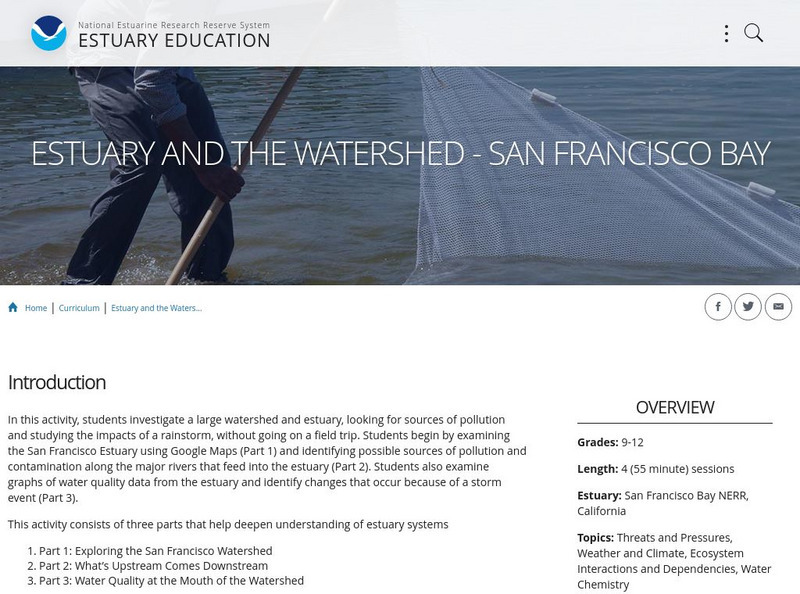Other
National Resources Defense Council: Your Oceans
Learn about issues that are major threats to the health of our oceans; read personal stories of how these threats affect people whose lives are connected to these valuable resources. Includes possible solutions and things you can do to...
US Environmental Protection Agency
Epa: Mississippi River / Gulf of Mexico Hypoxia Task Force
Learn about the task force formed to help the public understand the causes and effects of eutrophication in the Gulf of Mexico.
TeachEngineering
Teach Engineering: Would You Drink That?
This activity focuses on getting students to think about bacteria, water quality and water treatment processes. Students develop and test their hypotheses about the "cleanliness" of three water samples prepared by the teacher. Then they...
US Environmental Protection Agency
Epa: Polluted Runoff: Nonpoint Source (Nps) Pollution
EPA site offers answers to what nonpoint source pollution is as well as provides links and information as to what concerned citizens can do about it.
Smithsonian Institution
National Museum of Natural History: Ocean Planet: Water Pollution Toxic Materials
This site, from an archived Smithsonian exhibit, describes and illustrates the effects of toxic materials on wildlife in bodies of water.
Tramline
Tramline: Getting Green Virtual Field Trip
For this comprehensive website, students will learn about different forms of pollution, environmental impact of pollution, global warming, and things they can do to make a difference.
Georgia Department of Education
Ga Virtual Learning: Water, Soil, and Agriculture
Students learn about the fundamental importance of water, soil, and agriculture in sustaining the human standard of living; and the heavy toll that current agricultural practices take on water and soil resources.
Other
Icpdr: Ships and Environment to Share Danube River
This is a comprehensive analysis of the importance of the Danube River Basin and ways to balance human and ecological needs in the basin. The reason behind this study is the European Union's move to open shipping lanes in the Danube and...
Other
Uk Rivers Network: Finding Out About Water Pollution
Excellent site covers all types of water pollution. Hundreds of links including books, articles, organizations, specific topics.
NOAA
Noaa: Estuaries 101 Curriculum: Human Impact on Estuaries
Students will make a model of a pollution spill that occurred at Bangs Lake, a tidal lake within the Grand Bay National Estuarine Research Reserve in Mississippi, in April 2005, and measure water quality parameters in their model....
US Environmental Protection Agency
Epa: Epa Response to Bp Spill in the Gulf of Mexico
Get the facts about what the U.S. Environmental Protection Agency is doing in response to the BP oil spill in the Gulf of Mexico.
BBC
Bbc News: What Is a 'Top Kill'?
As the oil spill in the Gulf of Mexico officially becomes America's largest oil disaster, a major procedure, known as 'top kill', is being tried to stop the flow of oil. Details of the procedure, graphics, and video clips are included.
Center for Innovation in Engineering and Science Education, Stevens Institute of Technology
Ciese Collaborative Projects: The Global Water Sampling Project
By testing your local water quality, you will be able to compare your results with students around the world. Register your class, and follow the project instructions. Additional teacher resources, references, and Ask-an-Expert sources...
US Environmental Protection Agency
Epa: Contaminated Site Clean Up: Sediments
Explains what is meant by sediments, how they can become contaminated, the types of contaminants, how contamination levels are assessed, and methods of remediation. The side menu links to information about policies, contaminant...
Other
Serdp: Managing Contaminated Sediments
This resource is from the Strategic Environmental Research and Development Program (SERDP), an environmental research arm of the Department of Defense. It explains how sediment contamination has affected DoD facilities and what is being...
US Environmental Protection Agency
Epa: The Water Sourcebooks [Pdf]
This is online resource is for teachers of all grades. The Water Sourcebook contains activities grouped according to grade level. Detailed lesson plans are provided along with glossary and fact sheets.
Indiana University
Indiana University: Sediment Contaminants
This resource, which is part of a learning module, discusses sediment contaminants, problems associated with them, evidence of contamination, and how sediment contamination can be managed.
US Environmental Protection Agency
Epa: Hypoxia 101
Explains what hypoxia is, its causes, the sources, why it is important to reduce it, and where it occurs around the world. Includes a diagram showing how hypoxia develops in a water body and links to lots of additional resources.
Utah Education Network
Uen: Water Pollution Graphing: Bugs Don't Bug Me
Activity shows the link between land use activities within a watershed and water quality.
Other
Bay Area Restoration Council: Randle Reef
Hamilton Harbour is home to the largest and most contaminated site within the Canadian side of the Great Lakes - Randle Reef. The site contains approximately 695,000 cubic meters of sediment contaminated with polycyclic aromatic...
Other
University of New Hampshire: Contaminated Sediments Center
This site provides links to descriptions of various environmental research projects being done to develop the best methods for treating different types of contaminated sediments.
NOAA
Noaa: Estuaries 101 Curriculum: Estuary and the Watershed San Francisco Bay
In this activity, students investigate a large watershed, look for sources of pollution in the watershed, and study the impacts of a rain storm on a watershed and estuary, without going on a field trip. Students investigate the nature of...
PBS
Pbs Learning Media: River Rewilding: Advanced Water Quality
In this unit, students will try to improve stream quality and reduce human impacts by taking action.This Advanced Water Quality unit is packaged into three smaller parts: Part 1: Stream Habitat Assessment; Part 2: Macroinvertebrate...
Utah Education Network
Uen: Macroinvertebrate Graphing Activity
Students will learn about water quality indicators.


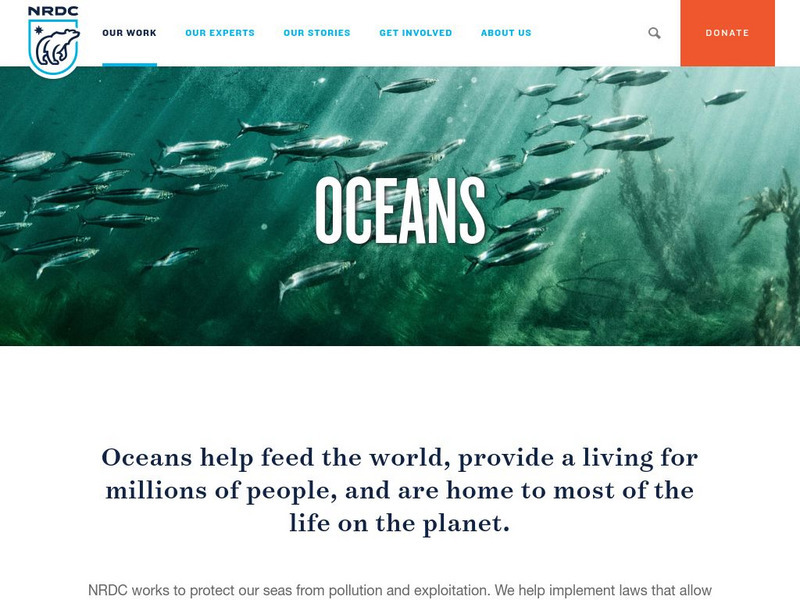
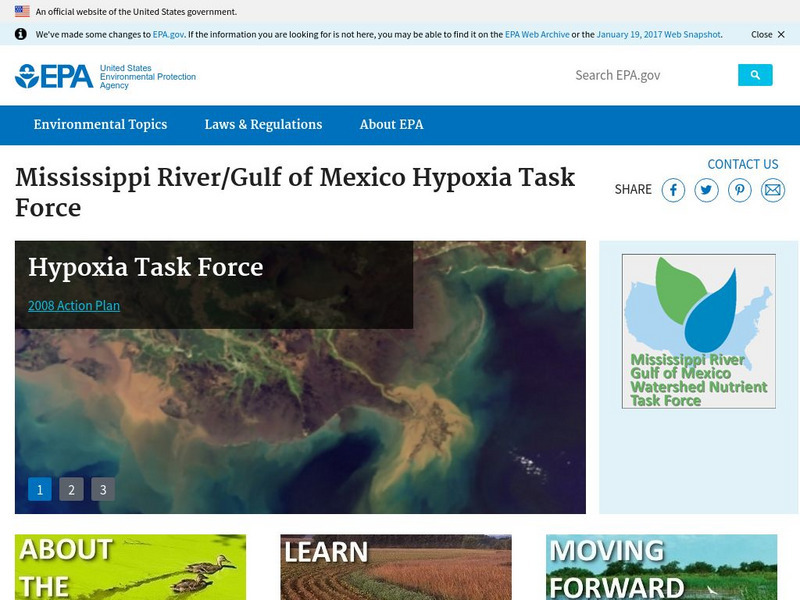

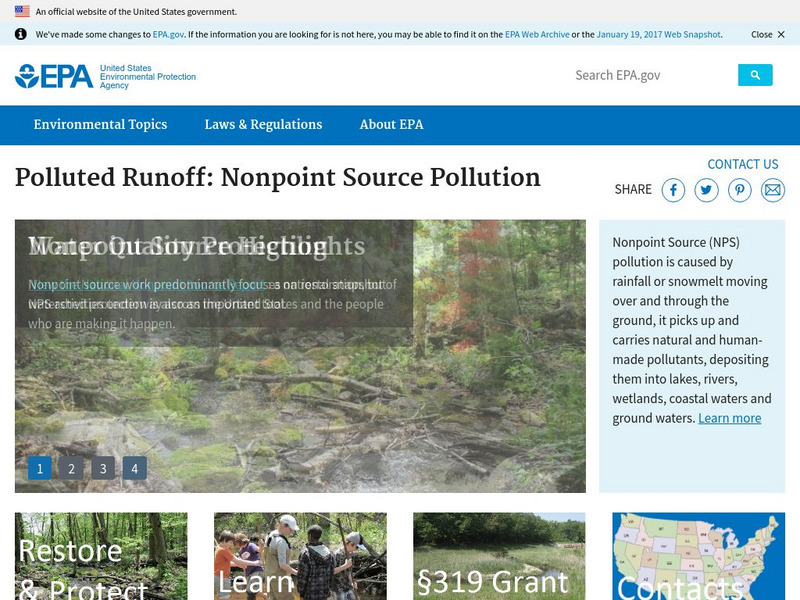


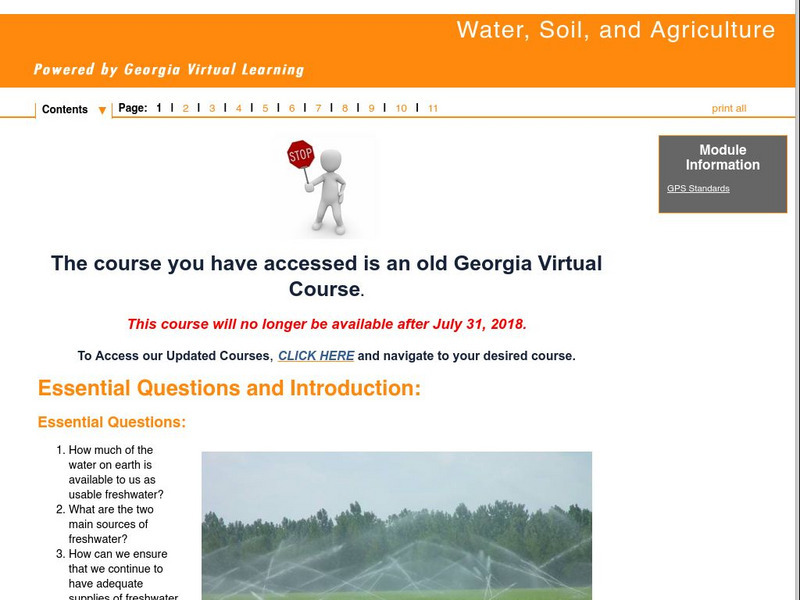



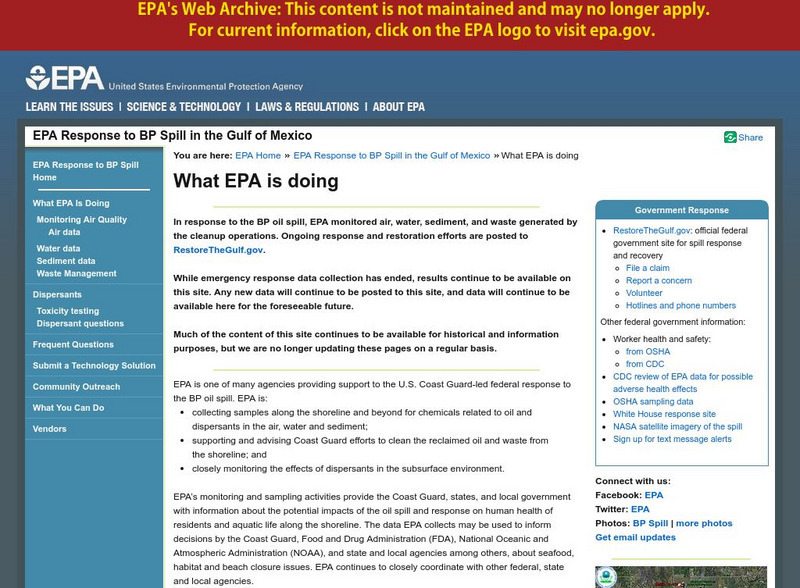




![Epa: The Water Sourcebooks [Pdf] Lesson Plan Epa: The Water Sourcebooks [Pdf] Lesson Plan](https://content.lessonplanet.com/knovation/original/438669-a5df3fb4e6ba6a238d3d8ad01b4a02a3.jpg?1661258064)



